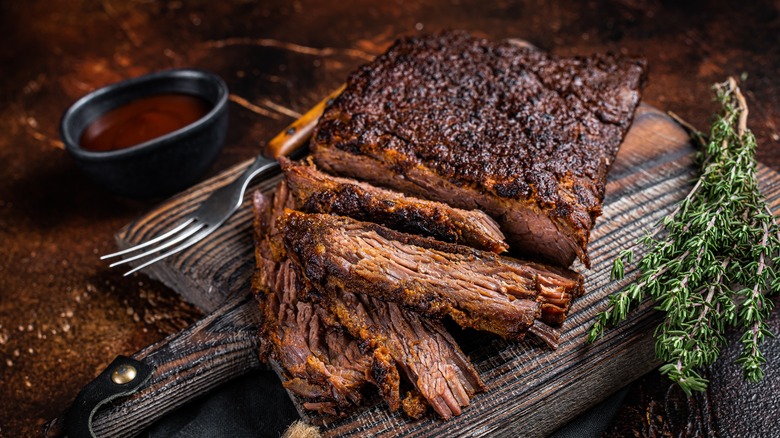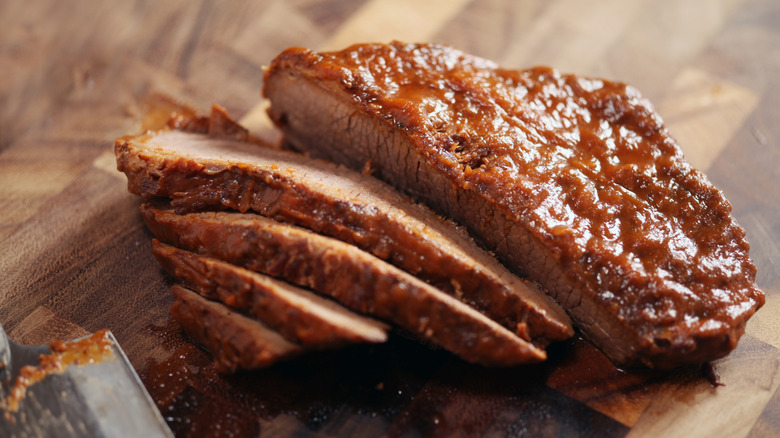How Long Should You Let Beef Brisket Rest?
When it comes to slow-cooked meats, it's hard to beat brisket. This sizeable beef cut — which comes from a lower chest beneath the ribs — is full of muscular connective tissue. However, let it patiently tenderize, and you get a juicy, flavorful, and well-textured beef cut. Plus, there are many ways to add flavors to brisket, from the salt and spices that can go into a crockpot of corned beef to a dry-rubbed smoked brisket.
However, particularly when going down the barbecue route, the cut requires a little more know-how than simply seasoning and waiting. An especially critical point comes whenever the beef is finished cooking. Like with steak, most meat requires resting — but the move is especially impactful to this cut. This beef chunk is at least 70% water, and since it is a muscular region, the meat strongly contracts during preparation. As it cooks, the moisture moves to the center of the piece, leading to dry bites if cut before the meat can relax.
So how long should you rest beef brisket? Well, that's a complex question, dependent on the size, smoking duration, and final internal temperature. Some professional pitmasters go up to a patient 12 hours. For the home cook, aim for somewhere around two hours, or alternatively, go by temperature and wait until the brisket cools to 145 degrees Fahrenheit.
Insulate beef brisket before resting for at least an hour
Give resting equal priority in the cooking stage, and the resultant smoked brisket will pay off in dividends. In addition to absorbing moisture, rest time further tenderizes the meat, as well as ties together the employed flavors. And resting is more than letting the brisket lay out on a cutting board — you'll want to avoid any rapid temperature drops or the meat hitting the Danger Zone.
If the beef's been smoking for an extended duration — say over eight hours — first let it drop down to 180 degrees Fahrenheit. Then, you'll want to insulate the cut. Many wrap the beef in foil, butcher paper, or towels, which ensures the best insulation. However, some pitmasters cite touching the brisket will ruin the external texture, so the call is up to you. From here on out, you'll want, at the very minimum, one hour of rest time.
It's best to place the entire cut into a room-temperature cooler for this duration. This is the ideal container to slowly but safely drop the temperature and let the brisket rest. Just keep an eye on internal temperature, and make sure it doesn't drop below 140 degrees Fahrenheit — or else it'll no longer be safe for consumption. However, get this resting process just right, and you'll be rewarded with a delectable, juicy piece of brisket.

